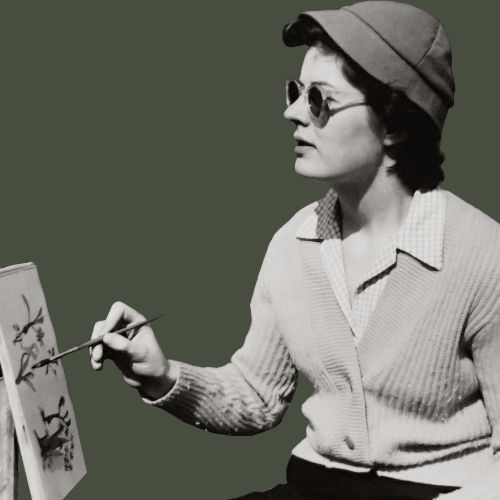Web strategist who helps creatives and service providers build websites designed to grow with them. Unlike other designers, I don’t just build for launch—I create strategic, scalable sites that stay valuable long after day one.
OH HEY!! I'M CHANTEL
Hey there, creative entrepreneurs! Ready to master the art of pricing strategies for artists? If you’ve been playing “The Price is Right” with your art (minus the exciting music and Bob Barker), you’re not alone. Stick around, and we’ll uncover some killer pricing strategies for artists that’ll have you confidently slapping price tags on your work faster than you can say “starving artist no more!”
Know Your Market: Pricing Strategies for Different Venues
First things first, where are you peddling your precious creations? Your pricing strategy for artists should fit your venue like a custom-frame painting.
- Street fairs: Keep it accessible, but don’t undersell yourself. You’re not a dollar store!
- Galleries: Remember, they’re taking a cut (often a big one). Price accordingly, or you’ll be paying them to display your art.
- Online: Research is your best friend here. Scope out the competition and price yourself in the right neighborhood.
The “Cost Plus” Method: A Core Pricing Strategy for Artists
- Start with your materials cost. (Yes, that fancy paintbrush counts!)
- Add your time. And no, don’t price yourself like you’re flipping burgers – unless your art is made of actual burgers, in which case, I have questions.
- Factor in your skill and experience. Remember, you’re not just selling a product; you’re selling years of practice and talent.
- Don’t forget overhead costs like booth fees and that coffee that keeps you functioning.
Pro tip: Use this formula as a starting point, not gospel. Art isn’t always logical (shocking, I know).
The “Square Inch” Trick: Another Pricing Strategy for 2D Artists
For 2D works, try this: (Height x Width) × Price per square inch
Start low if you’re a newbie (maybe $2 per square inch) and work your way up. It’s like leveling up in a video game, but with real money!
The Psychology of Pricing: Jedi Mind Tricks for Artists
Here’s where it gets fun. For smaller works, try prices ending in $7. It’s the Goldilocks of pricing – not as obvious as $5, but not as rounded as $10. It feels like a deal, even if it’s not. For larger works, round up. $200 sounds more professional than $193.47 (and easier to say after a glass of wine at the opening).
Consistency is Key in Your Pricing Strategy
Avoid pricing whiplash. If similar pieces have wildly different prices, your customers will be more confused than a cat in a dog show. Create a clear pricing structure you can explain without sounding like you’re making it up on the spot.
The Confidence Game: A Crucial Element in Artist Pricing Strategies
Here’s the real tea: confidence is key. If you believe in your prices, your customers are more likely to as well. Stand tall, own your worth, and remember – your art is unique, just like you!
Quick Tips for Pricing Success
- Offer a range of prices. Think of it as the “Goldilocks” approach – some low, some high, some juuust right.
- Consider your presentation. If your booth looks like a million bucks, your prices should reflect that.
- Don’t be afraid to adjust. If everything’s selling too quickly, you might be underpriced. If tumbleweeds are rolling through your booth, well…
- Keep records. It’s not just for taxes (though your accountant will love you). It helps you track what sells and at what price.
Time to Price Like a Boss!
Remember, developing effective pricing strategies for artists is an art form in itself. It takes practice, a bit of trial and error.
So, fellow art mavens, what’s your go-to pricing strategy? Any pricing horror stories you want to share? Send me a DM on Instagram! And if you have any questions about pricing strategies for artists, please don’t hesitate to ask!
Now go forth and price those masterpieces! Your bank account (and your inner artist) will thank you!
Looking for Website tips & tricks? no costumes needed.
Join my email list “The Web Designer Homemaker”
Ways you can work with me:
✍️ Download my free Website Project Planner

Pricing Strategies for Artists: The Art of Making Money (Without Selling Your Soul)
Web strategist who helps creatives and service providers build websites designed to grow with them. Unlike other designers, I don’t just build for launch—I create strategic, scalable sites that stay valuable long after day one.
OH HEY!! I'M CHANTEL